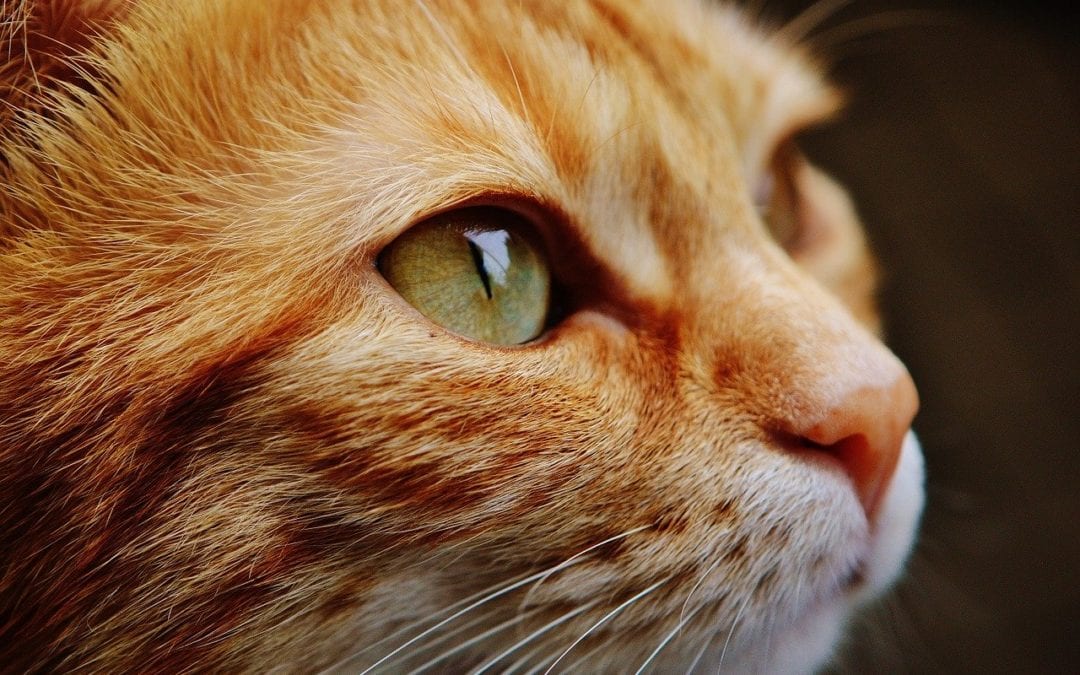Red itchy eyes are a sign of inflamed conjunctiva, otherwise called conjunctivitis. Conjunctivitis is a common problem in humans, as well as dogs and cats.
In humans, conjunctival inflammation has a number of underlying causes, and based on each individual case is usually managed with an over-the-counter medication or prescription. In our veterinary patients, conjunctivitis is most commonly caused by allergies in dogs, and by infection in cats. However, there can be many causes of inflamed ocular tissue, so it is important that a thorough eye examination is completed with sufficient diagnostic testing to guide a pet’s treatment plan.
The typical clinical signs of conjunctivitis include: red, puffy eyes, and frequent ocular discharge that can be watery, mucoid, or pus-like. The type of discharge sometimes gives insight into the underlying cause, but it is not definitive, so additional tests are always indicated.
A mild conjunctivitis for a day or two isn’t necessarily cause for concern, as it may resolve on its own. However, if there is marked redness, swelling, squinting, rubbing, excessive discharge, or cloudiness of the eye’s surface then it is time to have the eye evaluated by your primary veterinarian. Typically, initial testing involves the measurement of tear production which is used to diagnose a condition called “dry eye” (otherwise called keratoconjunctivitis sicca, or KCS for short), a fluorescein eye stain used to detect scratches or ulcers on the surface of the cornea, and measurement of ocular pressure to evaluate for glaucoma.
Decreased tear production can be managed with topical anti-inflammatory medications and tear replacement gels or drops. Superficial corneal scratches or ulcers can be treated with a topical antimicrobial ointment. If a deep ulcer is detected or elevated eye pressure is found, then a referral to a veterinary ophthalmologist is usually advised to seek specialized care of those complicated issues. The veterinary ophthalmologist may recommend additional evaluation such as a slit lamp examination of the front portion of the inner eye, and retinal examination to evaluate the back of the eye. These tests may identify the cause of the inflammation, or they may point to other causes like infection or allergies.
Since allergies are a common cause of conjunctivitis in dogs it is important to provide your doctor with other information that might support the presence of allergies. For example, a history of ear infections, skin infections, itchy skin with frequent licking, chewing, rubbing, scooting, or scratching. If other causes of conjunctivitis are ruled out, and there is supportive evidence of allergies, then visiting a veterinary dermatologist for an evaluation of the allergies is recommended. A veterinary dermatologist will take a comprehensive history and perform an examination of skin. They can help come up with a plan for working up the type of allergy. They will also help manage the allergic inflammation, which once improved will help reduce or eliminate the occurrence of conjunctivitis.
Since infectious agents are a more common cause of conjunctivitis in cats, these infections should always be considered when a scratch or other obvious cause is not found. If infection is suspected conjunctival or blood samples can be taken to look for suspected organisms, and glucocorticoids should not be part of their therapy. The most common infectious agents resulting in feline conjunctivitis include: feline herpesvirus, as well as Chlamydophilia, Bartonella, and Mycoplasma species of bacteria. In the event of a herpesvirus infection, they can either self-cure after a few days to a week, or they may require treatment with topical or oral antiviral medications. If a bacterial infection is suspected, then topical or oral antibiotics are typically prescribed.
What’s important to remember is that there are many cause of conjunctivitis. If your pet experiences conjunctivitis that isn’t going away or is recurring, talk with your primary veterinarian regarding a potential referral to a veterinary specialist.
Source: Vetted Magazine

